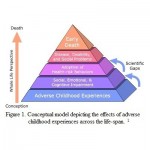How We Relate Predicts How we Meditate: Attachment Style is Linked to Mindfulness
During a recent trip to Los Angeles California, I was aroused from early morning slumber by an eerie sensation of movement. As the veil of sleep was pulled from my mind, I gradually registered the meaning of the shaking bed beneath me and the groaning structures above me: earthquake! A shot of prickly energy ripped through my gut and landed in my chest, quickening my heart. Adrenaline sharpened my senses and time seemed to slow as I instinctively made my way to the patio door. I looked out onto the street, half expecting to see creviced sidewalks and toppling buildings. Instead I saw people nonchalantly walking their dogs and sipping their morning coffee.
Despite the apparent banality of the event for local Angelenos, the earthquake was a hot topic at the airport among people unaccustomed to earth-shaking awakenings. As I waited for my flight, I found myself listening to a conversation between two newly-acquainted women.
The first woman excitedly asked the other, “Did you feel the earthquake this morning?” Leaving no room for a response, she went on, “Wasn’t that something! I mean, have you ever experienced such a thing? I didn’t know what to do – I jumped up and ran around in my nightie like a chicken with its head cut-off!”
The second woman, pulling back a bit from the shared space, cocked an eyebrow and flatly replied, “Didn’t bother me much really. This is L.A. after all – comes with the territory I suppose.” Shifting in her seat uneasily she scanned the terminal while drumming her fingers on the chair’s armrest, “Have you seen a trash can?”
The first woman took hold of the other woman’s arm, causing her coffee to quiver and nearly spill, “I just kept thinking, ‘What will I do if this hotel comes down around me? How will people find me? What will my husband do without me? I mean, he can barely make spaghetti!”
The second woman slowly unhinged her arm from the first and with a shrug said, “I guess if it’s your time, it’s your time.” Slipping out of the chair (and the conversation), she stood up and wandered away while casting a comment over her shoulder, “Never a trash can when you need one.”
As a social scientist, I was fascinated by this exchange. You might be wondering what we can possibly glean from this brief conversation between two strangers? Well, I believe that their interaction can tell us something about their attachment tendencies and their capacity for mindfulness. As it turns out, these two constructs, attachment and mindfulness, are linked by how a person expresses and regulates emotion. Let me explain.






